Some of the Fariseos (or Pariseros) in Sonora and Sinaloa carry drums, and these are often decorated. Sometimes the drums carry Christian images, but at other times there are cartoon or even erotic images instead. This practice is in sharp contrast to the drums of the Yaqui Pascolas and Chapayecas, which are usually undecorated. In 1988 there was a show—Behind The Mask In Mexico—that was held at the International Museum of Folklore in Santa Fe, New Mexico, before going on to other sites. A book of the same name mirrored the show in many aspects, and this was edited by Janet Esser. In the show, but not in the book, there was a Mayo Judio drum with a risque image of a female, which interested me because it seemed related to the emerging trend of Sinaloa Judios portraying themselves as women. Although an image of that drum did not appear in the book, Ross Crumrine did mention such a drum in his essay in the book—”Ritual Mediation of the Life-Death Opposition: The Meaning of Mayo Parisero Lenten Masks”—describing a drum with “a nude pin-up girl wearing high heels (p.86).” I hasten to add that such an image would be abnormal, even offensive, within normal Mayo experience, but tolerated as an expression of otherness by the Fariseos or Judios.
In my collection I have two decorated Mayo drums, and these will be the focus of today’s post. I’ll start with the most impressive example, which was made by Rolando Castillo of La Colonia Union in Sonora, so this is a Rio Mayo drum. Tom Kolaz had collected it from a Judio (or Parisero) in April, 2011, and I obtained it from Tom a year later. It is 14½ inches in diameter and 3 inches in thickness.
“He shall reign FOREVER (Handel’s Messiah).” This drum reminds us that the men who portray the evil deeds of the Judios are devout Christians who serve in this performance role in order to glorify God. Crumrine states, “The image of Christ crucified is the patron saint or supernatural guardian of the parisero sodality (p 86).”
Here is the other side of the Rio Mayo drum. I suppose that this a memorial drum, commemorating José Manuel Lupita (or Ludita). I don’t know who José was, but I wonder if he was a deceased Mayo who had served as a Parisero? There is a worn spot on the center of this side, where the drum was usually beaten, and no such spot on the side with Christ’s image. Evidently there was a deliberate decision to avoid striking the image of Christ. A second drum follows that was struck equally on both sides, neither side carrying a sacred image.
Here is the edge of this drum. The rim is of thin bent wood that has been bound together at the overlapping ends with clenched nails.
Here is an undecorated and unplayed Yaqui drum for contrast. The two drums have the same diameter and depth.
European style drums are tuned by tightening or loosening turnbuckles that hold the drum heads in tension. In the case of Yaqui and Mayo drums the lacing that pulls the drum heads tight is of fixed length and tension, and the pitch of the drum heads is raised by heating the drum over an open fire.
The overlapping ends of this drum frame were bound together with rawhide. The end of a drumstick protrudes from the side of the drum.
I found a photo of another decorated drum from San Xavier (Municipio Choix), Sinaloa on the Internet.
Here is anther with one of those “pin-up” images.
Here is the other decorated drum from my collection. I bought this one from Mahina Drees in 2019. This is an old drum that was stored for many years, and I suppose it dates to the 1980s or earlier. It is 12 inches in diameter and 2 inches deep. I don’t know whether this drum is from Sonora or Sinaloa.
Note the worn central area where the drum was beaten by the drumsticks.
“Cuidado con el perro” means “Beware of the dog.” On this side too there is a worn spot in the middle.
This drum is unusual because the rim is made of metal rather than wood. I suspect that this was made from a recycled aluminum cake pan.
The usual hole, matched by another on the opposite side, is meant to accommodate the drumstick.
Next week I will share a Fariseo mask from Queretero that I had overlooked when preparing an earlier post.
Bryan Stevens

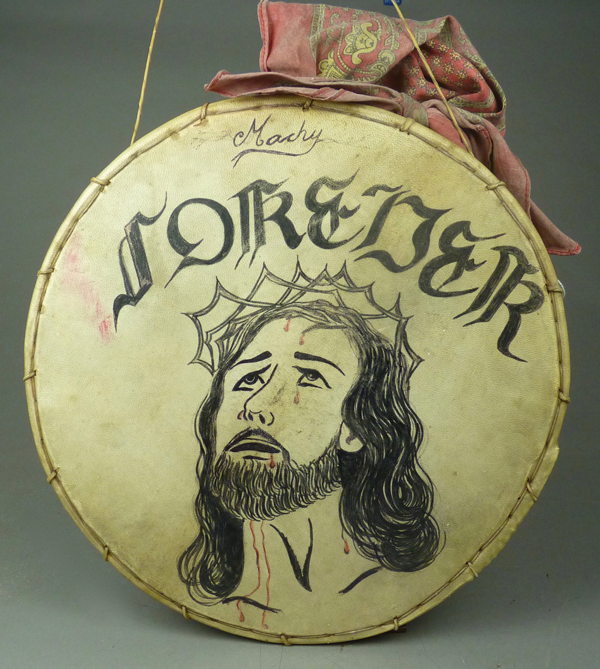
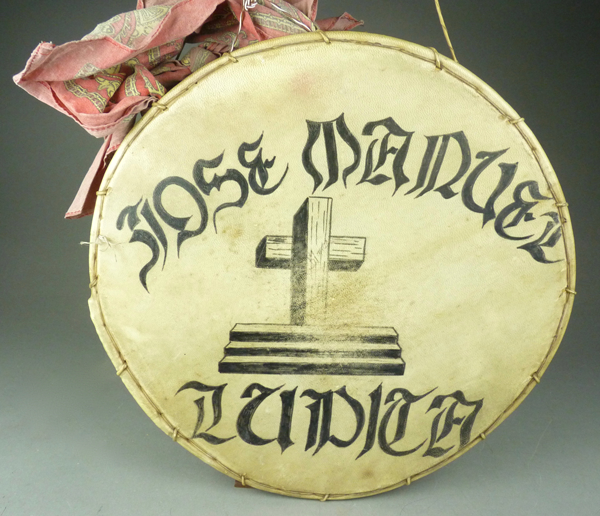

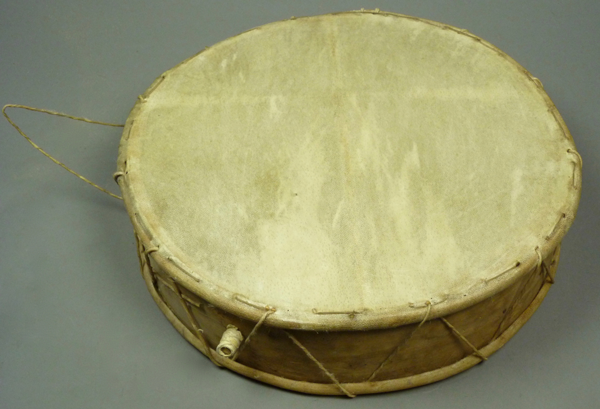
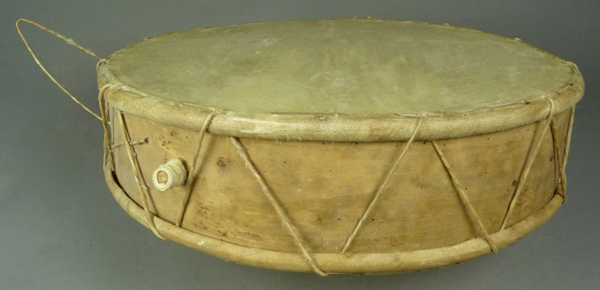
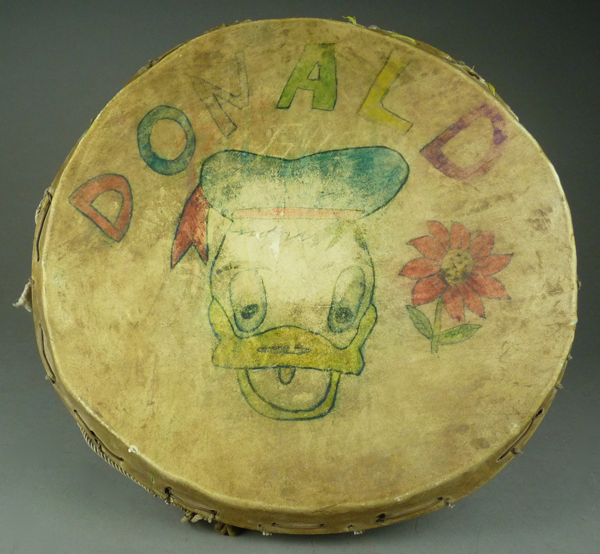

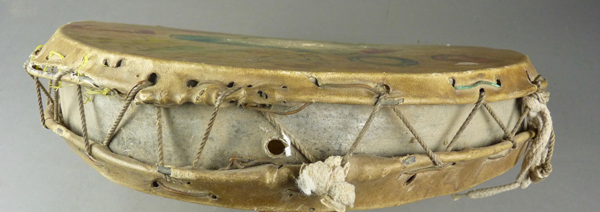
Love the drums!